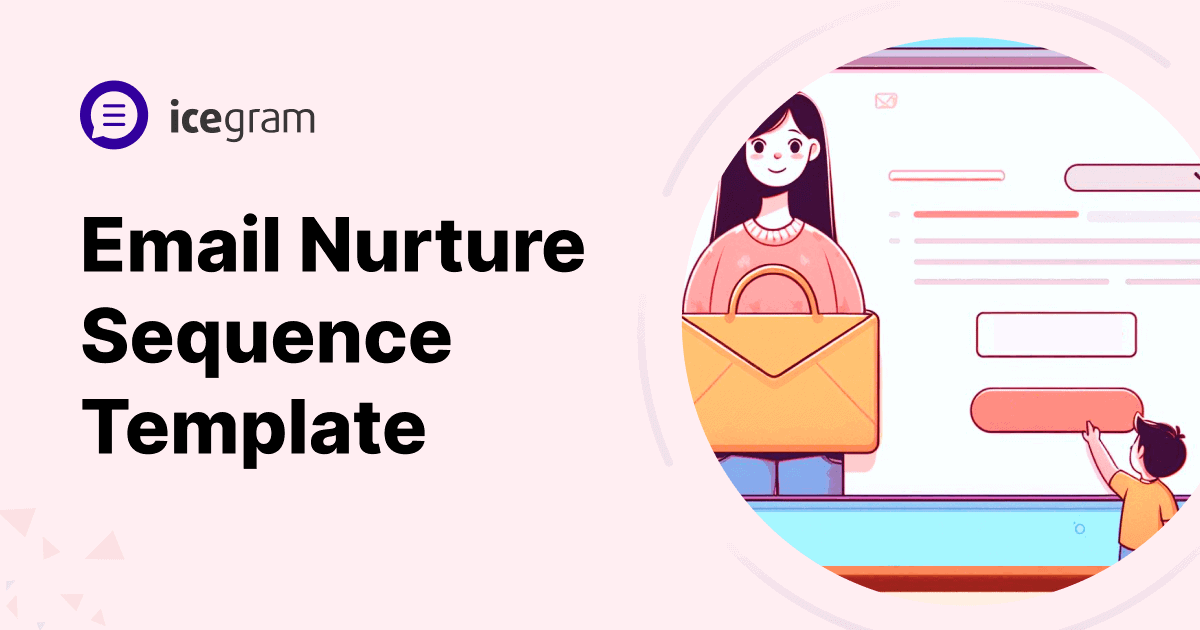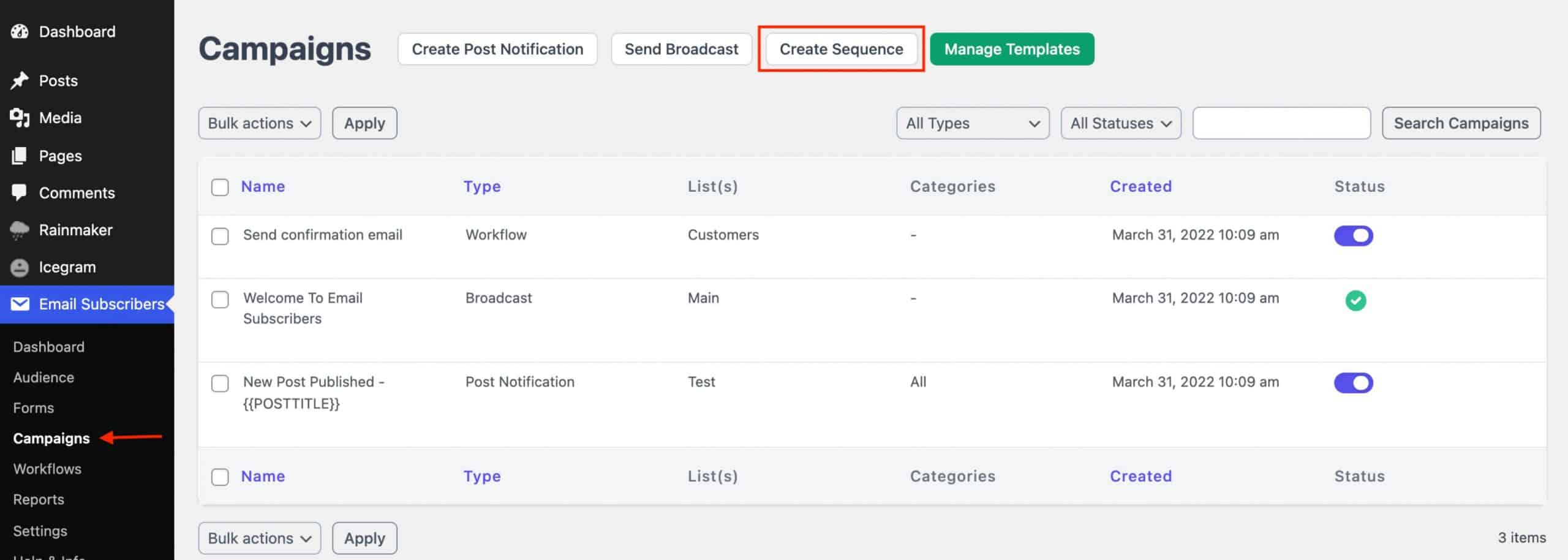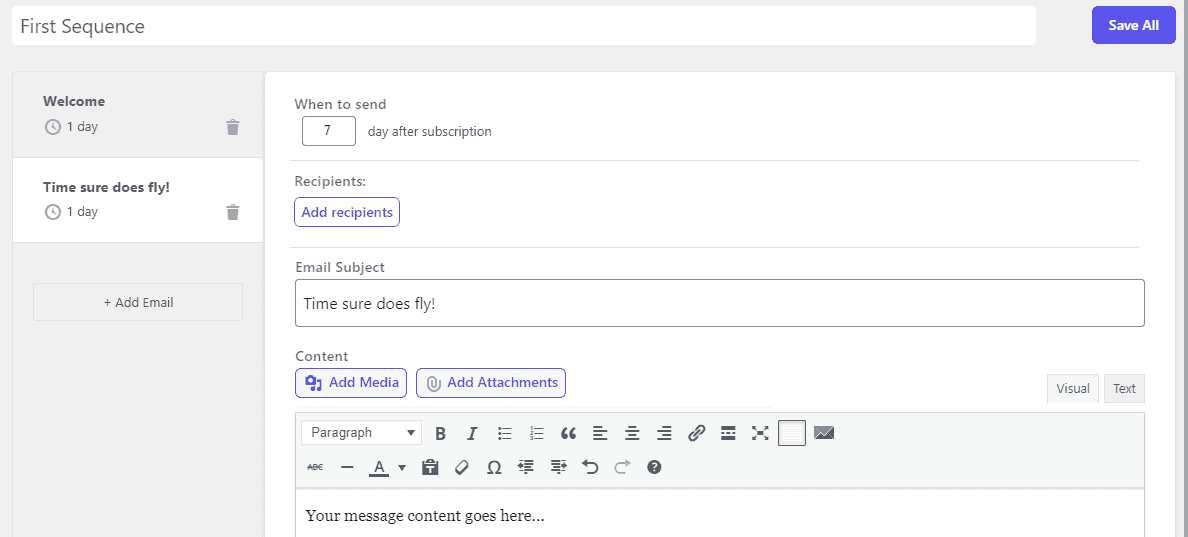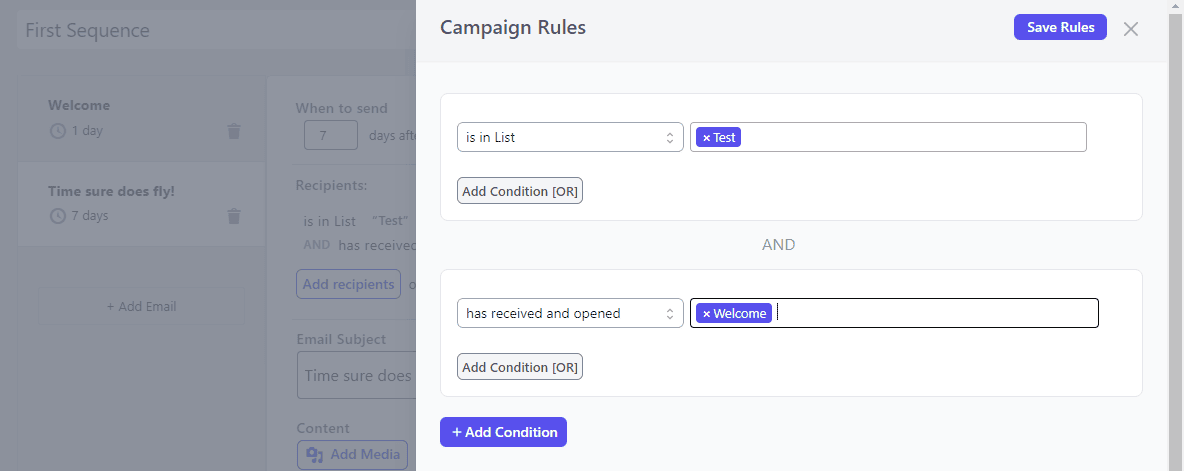How many times have we all heard the term – email nurture sequence template? But how many of us truly know what it stands for? Do you even know if your business needs to opt for it?
Certainly, when you are looking for results, simply taking vague measures and expecting results might not work.
For example, brands reaching out to everyone might lead you to miss out on qualified leads who are willing to purchase from you. On the flip side, you might end up promoting your brand to people who are not among your audience. This could be a perfect example of leaving money on the table.
Likewise, a faulty email nurture sequence can paint a bad reputational picture for your brand.
Moreover, doing things manually is simply not a solution when you have business growth on your mind! Not only does it devour your time, but takes away productivity and other resources as well.
Then how do you tick all the boxes, create a perfect nurture sequence and cultivate the garden of leads? Let’s know more about it below:
What are email nurture sequence emails?
The nurture sequence is a series of automated emails sent at timely intervals to the audience segment when they sign up for your email list. The idea is to nurture your relations with your audience and turn them into customers.
In a nutshell, it helps you communicate to your audience on a personal level, helps you add value and develops a relationship with them over time. Without a nurturing sequence, you are leaving a huge gap open that can cause your customers to slip through the cracks.
While it is effective, it is certainly not a one-time effort that shows results in a quick span. The nurture sequence emails can last a few weeks or months, keeping your leads engaged and moving towards the path for conversions.
Let’s check out what are the important aspects of nurture sequence emails.
Nurture sequence emails: Important things to remember
As per a study by Invespcro, nurtured leads make up for 47% larger purchases than non-nurtured ones. Results such as these are the reason why opting for nurture sequence emails is important.
Here are a few steps that can help:
Content is king
Focus on one topic, rather than cramming multiple ideas in an email. It makes the email easy to digest and more likely to be acted on. Besides that, ensure that the emails have the right flow and progress gradually.
Since short copies work best, your email content must also be concise. As per Hubspot, the ideal length of each email must vary between 50-125 words. However, if you wish to add more details, you can also go beyond the word count. For example, certain exceptions could be complex B2B topics that require in-depth explanations.
Needless to say, the content must address the key interests, challenges and pain points. The content must speak directly to the audience. You can share actionable insights, real-world examples and your experiences to keep the engagement ball rolling.
The right frequency
Though there is no correct answer to this, the right number could be somewhere between 2-3 emails in the sequence. Remember that the goal is to nurture your leads and not to dive into selling right away.
While some businesses continue to add emails to the sequence, we suggest setting these emails apart for some days. This can be a great way to maintain consistency and continue to share regular updates with your subscribers on autopilot at scale.
Other factors to consider to establish the right frequency include your marketing strategy and reviewing the results of your previous email campaigns, or the recent ones. In a nutshell, there can be a scope for trial and error.
This approach will allow you to understand what resonates with your audience.
Metrics to consider
Without numbers, how would you know where you are headed?
Not only effectiveness, but data can also show the pace and direction clearly.
The metrics to consider include the following:
- Open rates
- Click-through rates
- Unsubscribes, to name a few.
There are multiple other metrics that you can consider based on your campaign and other factors.
Automation
Email marketing automation reduces the risk of errors and eliminates the time taken for manual processes. It automates the email workflow.
Not only is it the need of the hour, but is substantially important for brands to craft sequences, send timely emails and newsletters, track the performance and a lot more.
With Icegram Express, you don’t even have to look for another option!
Check it out now!
How to write an email nurture sequence?
Building an effective email nurture sequence might take some time and effort. Since this can make or break your marketing efforts, it must be done with utter thought and care.
Here are a few important that you must not overlook:
Identifying your audience and goals
The purpose of the emails is to take your audience from point A to point B. Hence, as a practice, you must map out the buyer’s journey and identify the steps to take them to the next point.
Another crucial aspect – the better you know your audience, the better you can serve them.
That’s because what might work for one segment might not work for another.
It is likewise important to ensure to choose the right email marketing platform for your business. Some questions to keep in mind include:
- The audience segment you want to nurture
- People who are actively looking for your products/services
- Audiences that are willing to pay for your offering
The more you know their world, the better you can communicate and nurture them until they are ready to convert.
Going forward, these insights will also be valuable in creating content for your audience.
Crafting the sequence and strategy
Content is king, but we say the strategy is the throne! Hence, equally important!
Determine the beginning and end of the sequence and craft an entire strategy around it. Here is what your outline must include:
- How many emails do you want to send?
- What will be included in each email?
- What will the CTA be?
- What should be the gap between each email?
The content must be built around empathy and must address the following questions:
- What problems are your audience facing at the moment?
- What are the best possible solutions to their problems?
- What are the resources and content that will be the most useful at the moment?
Answering these questions will help you build your content and strategy around it.
Personalizing emails
As with every other marketing aspect, there is no one-size-fits-all approach to building an email nurture sequence. So make sure to take the time to plan and personalize the emails, for it to hit the target.
The focus must be on building trust, educating the audience and adding value. Answer as many questions as possible and provide as many resources as you can. Waves of value will prevent your customers from swaying away from your brand.
Here are a few simple ways you can integrate personalization into the email fabric:
- Personalize your subject lines and email content.
- Provide additional resources such as e-books, video links, blog posts and more.
- Use a friendly tone that does not sound sales-y.
- Refer to their interests.
- Providing references to their buying patterns.
- Include a clear call-to-action (CTA).
This might make it feel like the email is specifically crafted for them.
Rather than making this email sound self-promotional, thank your audience for taking the desired action.
Besides personalization, you must also ensure that the content is relevant. Here’s what you can do to ensure relevance:
- Researching the competitor’s content.
- Studying the customer’s interviews and surveys.
- Evaluating the content that is most preferred by the customers.
Measuring success
Track the email performance and make tweaks to the collected data. Some of the key metrics that will help you measure your effectiveness and eventually success include:
- Open rates
- Click through rates
- Time spent reading
- Unsubscribe rates
- Goal conversions
These help in checking growth and progress, while also keeping an eye out for areas of improvement and current trends.
Optimization
Perfection requires a lot of optimization.
If you see a few emails in the sequence not performing well, you can tweak different elements, or remove the email from the sequence altogether. You can also experiment with varying content angles for better results.
Besides that, what better way to optimize emails apart from A/B testing? For better results, test all the aspects of your emails and get the pulse of the ones that resonate and perform the best.
6 Email Nurture Sequence Templates

Besides explaining the do’s and don’t, we believe examples such as the ones below can help you get a good idea about what an ideal nurture sequence looks like.
Check out a few examples below:
Email 1: Welcome & Introduction
Subject: Welcome! Here’s how we can help you succeed
Hi [First Name],
Thank you for joining us! We’re excited to have you on board. At [Your Company Name], we’re committed to helping you [solve pain point] with [specific product/service].
Here’s what to expect:
[Benefit 1]
[Benefit 2]
[Benefit 3]
Need help getting started? Reach out to us anytime. We’re here to support your success!
Best,
[Your Name]
[Company Name]
Email 2: Highlight Key Benefits
Subject: See how we help you achieve [specific goal]
Hi [First Name],
Did you know that [Your Product/Service] can help you [specific benefit]? Here’s how we’ve helped businesses like yours:
[Benefit 1]
[Benefit 2]
[Case Study/Testimonial]
Explore more about how we can make a difference for you [link to resources].
Best regards,
[Your Name]
[Company Name]
Email 3: Educational Content
Subject: 3 expert tips to boost your [specific area]
Hi [First Name],
Ready to take your [specific goal] to the next level? Here are three expert tips that can help you:
[Tip 1]
[Tip 2]
[Tip 3]
Check out our blog for more in-depth insights [link to blog]. We’re here to help you grow!
Best,
[Your Name]
[Company Name]
Email 4: Overcoming Common Challenges
Subject: Struggling with [common problem]? Here’s the solution
Hi [First Name],
We know that [common challenge] can be frustrating. The good news? [Your Product/Service] is designed to solve that. Here’s how we help you overcome it:
[Solution 1]
[Solution 2]
Let’s schedule a quick call to discuss how we can tailor the solution to your needs [calendar link].
Best,
[Your Name]
[Company Name]
Email 5: Final Push & Call to Action
Subject: Don’t miss out on [benefit]!
Hi [First Name],
We don’t want you to miss out on the benefits of [Your Product/Service]. Here’s a quick recap of what you’ll get:
[Benefit 1]
[Benefit 2]
[Benefit 3]
Ready to start? [Call to action: Schedule a demo, Start a free trial, etc.]
Looking forward to helping you succeed!
Best,
[Your Name]
[Company Name]
Email 6: Lead magnet email
Subject: 5 Tips For Growing Your Business Without Needing Social Media
Preview Text: Your free 5-page guide inside!
Hi!
Woohoo! Welcome to the
Thanks so much for being here.
Access your free
Until next time,
[Name]
How Icegram Express helps with automation
Email sequences in Icegram Express help create, schedule and send emails to a targeted list of leads, customers and subscribers.
Here’s how to create a sequence in Icegram Express:
- Navigate to Icegram Express > Campaigns > Create New.
- Click on Create Sequence
- Give the new email sequence a Title.
- Start creating the first email by specifying when to send the email and enter the subject and the message.
- Click on Add Recipients. You can prepare some rules to choose your target audience.
- For eg. You want to send your second sequence email to the “Main” list but only to those subscribers in the Main list who have received and opened the first email i.e. Welcome email. So you can select recipients that are in the “Test” list, then click on +Add condition to add an “AND” rule and add the rule i.e. “has received and opened” and choose a particular email from the dropdown list.
- After adding the rules, click on Save Rules
- You can then Click + Add Email to add more.
- Scroll to the top and click Save All.
Voila! The sequence campaign is set up. The emails will now be automatically sent to your subscribers based on the days set up in the campaign.
Further, Icegram Express helps create trigger-based advanced automation workflows. It has all the features that you need to run your email marketing campaign. You can also use ready-made designs and pre-built automation.
Conclusion
While nurture email sequence is a way to stay on top of the customers’ minds while continuing to provide value, automation is what you can rely on.
There is a lot that email nurture sequences have to offer. However, paired with the perfect tool, it can make the process an easy breeze for you!
Allow Icegram Express to help!
FAQ
- How long should a nurture email sequence be?
There is no set length for how long the campaign could run. This sequence could also be referred to as a long-term email campaign.
- What is the difference between email drip and email nurture?
Drip campaigns are sent on set days or dates, while nurture campaigns are triggered by a user’s actions or behaviors.
- What are lead nurture flows?
A lead nurturing flow connects each piece of your campaign so the lead can seamlessly move through their customer journey.
- How to nurture inbound leads?
You can nurture inbound leads through awareness content. This may include social media updates and blog posts.




